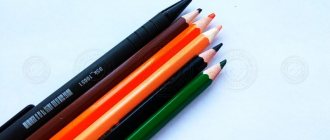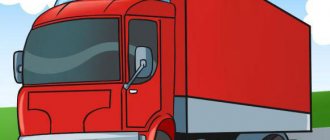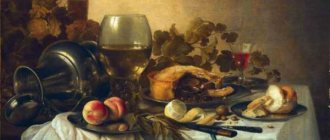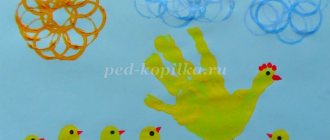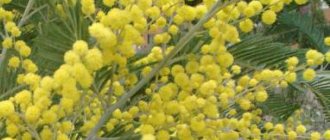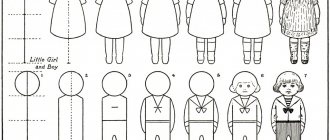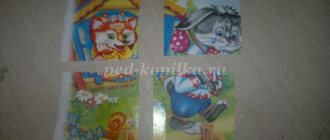Child development through drawing
The benefits for children from such creativity are enormous: fine motor skills develop, which in turn affects the child’s speech and memory.
When painting with finger paints, the child’s nervous system also develops, he learns to sit and walk correctly. By painting with their fingers, children better perceive colors and see the boundaries of their work. In the process of creativity, you can study colors, shapes, counting, paint animals and various objects that you will introduce your baby to.
Let's paint with our fingers!
Even for the youngest children, drawing can become one of the most favorite and useful activities. Children aged 1-2 years cannot yet depict objects. Besides, they are so fidgety! Therefore, the most accessible way to draw for such kids is with their fingers. And really, what could be simpler - dip your finger in the paint and paint... Even a child who is just beginning to draw can produce very beautiful works. It is difficult to spoil a picture in which night stars are poked in random order with your finger or red rowan berries are scattered on the ground for hungry birds.
If creative abilities remain unclaimed, then emotional depression accumulates over the years. Drawing helps to release accumulated creative energy and express your “I”.
Recently, children under the age of one year are being taught drawing more and more often. The youngest artists are six months old. “Why so early?” - many are surprised.
M. V. Gmoshinskaya - Candidate of Medical Sciences, pediatrician, author of a method for teaching drawing to children in the first year of life - believes that it is necessary to start as early as possible.
Drawing helps to establish creative and emotional contact between mother and child, develop attention, memory and thinking through artistic methods. In addition, in the process of creative work, sensory, fine motor skills, and color perception occur. “Unlike all proven methods, we do not show the baby “how to” and “how to do it right,” but rely entirely on his intuition, imagination, desire and even whim,” writes Gmoszynska.
Little artists learn to choose and mix colors from the palette, and they do it themselves. At first, babies simply draw with their fingers, a little later with their palms, and after a year - with brushes. The result depends on the artist’s mood, his “artistic experience,” as well as the mood of those around him.
Drawing at any age is great fun. Unfortunately, most of us almost never draw or do it extremely rarely. By doing this we are greatly impoverishing ourselves. Maybe we should have started drawing earlier too...
Art teachers say that at the age of 4-5, some children are afraid of a white sheet of paper. The teacher has to draw some kind of “squiggle” on the sheet so that the child decides to start his drawing. But with children who started drawing at about a year old, there is never a fear of a blank sheet of paper.
Progress of the lesson:
1. A sunbeam and asks for help.
2. Children are ready to draw a lot of rays from the sun to make it lighter, warmer, and the snow to melt faster. Showing a method of applying gouache to the palm and imprinting it on paper.
4. Evaluation of work. Reading poems
“
Sunshine , sunshine ” Sunshine , sunshine , Look out the window, Shine a little light, I’ll give you some peas!
Olga Chusovitina “Me and the Sun ”
The sun is shining through my window in the morning, which means it’s time for me to go to kindergarten. I quickly wash my face, brush my teeth myself, and I can hear the cheerful noise of birds outside the window. The birds are happy that spring has come,
5. Games with a sun bunny .
Synopsis of the physical education lesson “Let's go on a flight” (first junior group) Synopsis of the physical education lesson 1st junior group. “Let's go flying.” Venue: on the street. Objectives: 1. Strengthen the ability to perform.
Summary of the integrated lesson “Grandfather Frost’s Birthday!” (first junior group) Summary of the integrated lesson “Grandfather Frost’s Birthday!” (1st junior group) Tasks: Introduce children to the main character of the New Year. Summary of the integrated lesson “Needles for a hedgehog” (first junior group) Integration of educational areas “Artistic and Aesthetic”, “Speech Development”, “Cognitive Development”, “Physical Culture”. Synopsis of the integrated lesson “Oh, the red rowan tree” (first junior group) Synopsis of the integrated lesson “Oh, the red rowan tree” (first junior group). Program content: Expand your understanding of trees.
Abstract of the educational activity for drawing "Balloons" (first junior group) (2-3 years) Abstract of the educational activity for visual activities (drawing) "Balloons" First junior group (2-3 years) Objectives:.
GCD summary for drawing “Let's decorate a plate” (first junior group) GCD summary for drawing “Let's decorate a plate.” (first junior group) Integration of educational areas: • cognition • socialization;.
Summary of the modeling lesson “Mother Duck and Ducklings” (first junior group) Purpose: To arouse in children the desire to depict, sculpt; Develop fine motor skills and creative abilities; Continue to master some. Summary of the lesson on plasticineography “Ladybug” (first junior group) Program content: • Form children’s ideas about the inhabitants of their immediate environment, teach them to recognize and name animals by their bright colors.
Source
About tasty and tasteless colors
The first thing your six-month-old aspiring artist will try to do is put paint in his mouth. This is completely natural for a child at this age. The most common reaction of parents is to limit the movement of their hands and tell the child constant “no”. Unfortunately, such actions exclude the free activity of the baby. In this case, the whole point of the drawing process is lost.
Of course, any paint is an absolutely inedible thing, and you need to remember this! You can stop your child from eating paints in this way: add a solution of Epsom salts or mustard to the paints. The child will understand: if it is “bitter”, it means “impossible”!
It is worth noting that both gouache and finger paints themselves also taste quite unpleasant, and it is unlikely that the child will want to try them again. So don't worry too much if he licks his painted finger or drawing.
Finger paints for kids
Finger paints are great for little ones.
- They can be given to a baby from about six months of age.
- Such paints are specially made for little ones and they do not contain harmful and toxic ingredients, they are made using food coloring, because little children put everything in their mouth and taste it.
- To prevent children from doing this, they usually add salt or another ingredient to the paints, after trying which the child will no longer want to repeat it.
- Finger paints can be easily washed off any surface, washed off from a child’s skin, and washed off from clothes.
Characteristics of finger paints
Child psychologists are sure that the sooner a child starts drawing, the smarter he will grow up. Until the baby has learned to hold brushes and pencils in his hands, finger paints are the best option. In addition, felt-tip pens, colored pencils, watercolors and gouache contain unsafe substances, and it is very difficult to remove traces of them from clothes and furniture.
Progress of the lesson
- Today you and I will be wizards, not with a brush , but with our palms, together with our mothers .
-Let's all roll up our sleeves together, take the sponges and dip them in the paint, then apply the paint to your palm , place your palm on the leaf and remove it , you get a palm . Look, your palm is dirty , what should you do?
- Yes, it’s good to wipe with a wet napkin.
Let's practice with you, as if the paint is standing next to us
— Dip your palm in paint and apply it to a sheet of paper. Let's try again (2nd time)
dip in paint and apply.
— When you finish, wipe your palms with napkins .
- Oh, what fun spring palms we got ! Let's admire them!
Now we need to figure out what can come out of our palms ? Let's try to paint on the details with our fingers . What a beauty we have, octopuses, cockerels, elephants, and very beautiful spring flowers.
- Well done boys! Well done! Many thanks to our mothers !
Now let's go wash our hands so they are clean.
Artistic and creative project “I’m not a wizard, I’m just learning!” “I’m not a wizard, I’m just learning” Artistic and creative project. II – junior group. Educator: Petrenko A.I. Relevance: Fine.
Source
Organization of the process of painting with finger paints
The drawing process itself is very exciting, so don’t forget about the precautions:
- dress your child in clothes that you don't mind getting dirty
- put on a bib or apron, there are special aprons for creative activities
- use a large sheet of paper, preferably Whatman paper or a piece of wallpaper, so as not to limit the child
- if you will draw on the floor, put oilcloth underneath
- transfer some of the paint you will use to other containers so that the child does not use all the paint at once, which is exactly what he will do if you give him the whole jar; can be transferred into lids or toy dishes
- prepare wet wipes or a wet cloth
It is better to start drawing when the child is in a good mood, so that he associates drawing only with positive emotions.
How to prepare a place for drawing?
- Watercolor paints are pre-diluted with water, creating a paste-like mass.
You cannot take materials with an expired expiration date for children's art lessons. They can cause allergic reactions in a child!
- It is better to pour the paint into saucers. It is difficult for a child to carefully pick up the required amount of coloring composition with his finger. It is much easier for babies to place their palm completely in a flat container.
- It’s good if there is a small vessel with warm water nearby. It allows your child to wash their hands when the color changes.
| The baby should not be left alone while drawing., otherwise he will definitely taste all the colors. The same applies to art lessons using semolina. During classes, you need to make sure that the child does not accidentally inhale semolina . While drawing, infants and one-year-old children enjoy tapping and clapping their palms on the surface to be painted. It is useless to expect a child to be able to engage in creative activities without getting their clothes dirty. Apart from the artist himself, everything within a one-meter radius will be painted, including his parents. Therefore, it is better to immediately allocate a place for studying, which will then be easy to clean . An oilcloth-covered floor is ideal for drawing with children aged 1 to 3 years. |
The first lessons are conducted like this:
- To begin with, you can give your child a few flowers. 3-4 main ones are enough.
- A small album sheet of paper is completely unsuitable for drawing with your palms. Here you will need a large sheet of Whatman paper or a piece of wallpaper.
- The child should be dressed in clothes that you don’t mind, or, if the room is warm enough, stripped down to panties. The young artist will definitely get dirty and try to depict something on himself.
A child’s first steps in art will resemble paintings by abstract artists.
There is no point in asking your child to complete certain tasks. He will not be able to draw accurately, because he does not yet control his own hands well enough. At the age of one to two years, a child can draw with his fingers on semolina scattered on a tray . The material for drawing can be pre-tinted and scattered into different jars. Before class, the cereal is poured out in small slides on different edges of the tray, and the child is asked to mix it like sand with his palms. Then run your fingers along the resulting multi-colored surface, leaving a mark. Invite the child to repeat the action.
With a child over 2 years old, playing with visual aids can be a little more complicated.
At the beginning of the lesson, the plane is covered with unpainted material. Then the mother shows the child how to draw lines with her fingers, and then with a stream of colored semolina. For this purpose, colored cereals are poured into rolled paper bags , in which a small hole is left at the bottom.
You can paint with children using any available means:
- Crumpled paper.
- Toothbrushes.
- Natural material (leaves, twigs, blades of grass).
- Pieces of fur.
- Cotton buds.
- Scraps of fabric.
One-year-old children are not able to draw perfectly even geometric shapes and complex objects. A child's drawing consists of a set of dashes - lines, scribbles and spots.
The more often a child draws, the more complex and interesting his work becomes.
Precautions when finger painting with children from one to three years old
You can only draw with kids who taste everything using paints that are safe for their health.
How to create with your fingers
Fingerprints resemble a brush stroke. Finger and palm typing can be used as a basis for creating various characters. Before starting work, the little ones are shown on a sheet of paper how to put dots and make lines. The baby tries to touch the paint with the tip of his finger.
Note! To change the color of the dye, the child will need to wash his finger in water and wipe it.
Creative work in non-traditional techniques can have any topic. Many finger painting ideas for children can be found in the world around us. You can come up with a variety of ideas for such work. For the youngest children - a yellow round chicken, red berries and so on.
When kids have practiced poking small areas with their fingers and filling them evenly, you can give them a more difficult task:
- draw large objects with your fingers;
- lay the prints along the steep curl.
A difficult task for children is to arrange their fingerprints in a circle from the center (this is how the spots on the tail of a turkey or peacock are located). This method can be used to decorate any round object, starting from the center and moving in a circle to the edges of the circle.
Note ! Older children are interested in more complex drawings.
To get a larger print, they press their finger to the surface of a sheet of paper and roll it over. Next you need to figure out what you can turn this resulting oval silhouette into. Using a felt-tip pen or pencil, they will complete the color masterpiece to whatever their imagination tells them - seasons, flowers, funny animals and many other funny images.
Drawing on the theme “Autumn”
Ideas for finger and palm painting
Children know how to see beauty. Palm printing is one of the favorite lessons of preschoolers, which takes them into the world of bright and amazing images. This exciting process is like a fun game - children are liberated and reveal their creative potential.
Non-traditional drawing lessons help to achieve a high artistic understanding, develop a sense of color and composition, the transition of one shade to another.
The technique of the work process is simple: the child dips his hands in paint or paints them with a brush, and then leaves a print on a piece of paper.
Note ! Different groups of children's institutions use different drawing techniques: techniques for adding details, the level of complexity of compositions, artistic creation of entire multi-color paintings with fingers.
Using the large stroke technique you can create beautiful landscapes. With your fingers it is easy to make not only prints, but also smeared lines (for example, hedgehog needles).
Blurred lines
The branches of the Christmas tree are obtained by drawing your fingers on both sides of the trunk, the fence is obtained by straight lines. Spiral lines create the silhouette of a blooming rose - the theme for a beautiful card for mom on March 8th.
Finger painting for children is a very useful hobby that provides an opportunity to diversify a child’s life. The sooner a child begins to engage in unconventional drawing, the faster he will develop.
Summary of the lesson on drawing with palms “Sun” (first junior group)
Elena Aleksandrovna Bizyaiva
Summary of the lesson on drawing with palms “Sun” (first junior group)
Municipal budgetary preschool educational institution kindergarten No. 62 of a combined type.
Summary of a lesson on drawing with palms
on the theme " Sunshine "
first junior group
Educator: Bizyayiva Elena Aleksandrovna
Sun ( painting with palms )
Purpose: to introduce the technique of palm . Learn to quickly apply paint to your palm and make an imprint - rays of the sun . Develop color perception.
Preliminary work: Learning nursery rhymes, observing while walking, playing games. Equipment: landscape paper with drawn in the middle, yellow gouache, brushes, napkins.
We play finger painting with children under one year old
A child under the age of one year should be taught to draw gradually. You can show him every day, using your example, how to draw with your finger using paints, drawing lines and dots on a sheet of paper. The lesson may last only a couple of minutes, but is carried out systematically. After a few such lessons, the baby himself will reach for the paints to try to do the same as his mother.
You can offer your child various finger painting games. At the same time, you can draw not only with paints. “Kitchen material” is also suitable for this - flour, fine grains, salt or even sand.
You can pour this “stuff” into a baking sheet or a large cardboard box lid. Having distributed the contents in a thin layer over the surface, you can begin to draw with your finger, drawing lines and circles:
For the little ones, the games will be short and the material will be simple to keep their interest. Before the age of one year, it is better not to give your child real paints, even the most “harmless” ones, because he will still taste them.
A substitute for paints for the little ones is natural food dyes. You can use the products themselves: berries, carrots, spinach, beets. The juice of these berries or vegetables should be squeezed out and poured into plates. The baby will dip his finger there and draw on paper. At first, you need to show your child by example, luring him into the process.
In addition to juice, you can also draw with pieces of boiled carrots or beets, as well as crush currants or raspberries directly on the sheet. Children at this age do not yet care about the result of their work, they are interested in the process itself, so do not try to teach your child “how to”, let him just do what he wants.
Of course, before creative entertainment, the mother needs to dress the child in “work clothes” - a blouse and pants that you don’t mind getting dirty, and also sit the baby in her arms or in a high chair covered with a material that is easy to clean. In this case, the child will enjoy the creative process, and the mother’s nerves will be in order:
Invite your child to draw with semolina porridge. Yes, yes, porridge... not very liquid semolina porridge is an excellent material that spreads so well. A plastic children's table, a large tray or just paper can serve as a canvas. And if you add food coloring (a little juice) to the porridge, you get paint. Let the baby smear these “paints” on the table, try them by touch and study all their properties. The advantage is that the child will not get poisoned even after tasting them. Offer the artist a couple of colors and let him try to mix them.
Film your child in the creative process and you’ll get a wonderful story for the archive. In no case should you forbid your child to draw the way he wants. Give him freedom of action, taking care of the safety of these actions in advance and monitoring him.
Summary of GCD for drawing with palms in the first junior group “Birds”
Nadezhda Stupnikova
Summary of GCD for drawing with palms in the first junior group “Birds”
Summary of the drawing lesson “ Birds ”
in 1st
junior group .
Goal: to develop the skill of drawing with palms . Refine and consolidate knowledge of colors. Develop interests and a positive attitude towards drawing . Develop household skills.
2. Develop memory, imagination, logical thinking,
creative abilities: sense of color, imagination.
Materials for the lesson:
For the teacher: Illustration with a picture of a bird , album sheet,
gouache, brush, napkin, bowl of water.
For children: Landscape sheet, gouache, brushes No. 6 and No. 3, napkins.
How to draw a fire
A fire is very easy to draw. Below you need to paint two thick stripes with brown paints. They will represent logs. And draw a palm on top with yellow or orange paint. This is how easy and simple it is to create a fire.
- You need to dip your hand into pink or red paint, fingers down. Then dots are painted with black and white paints. Leaves are painted with green paint.
- Four marks from the baby's palms are drawn with fingers down. A circle is drawn on top of the very first palm, which will represent a face.
- If you dip your baby’s palm in yellow paint, this is how you paint mermaid hair. And with the help of a palm with green or blue paint they depict a tail.
- Using gray color you can very easily depict a dolphin. All that remains is to paint the sea in blue.
- You can very easily draw a zebra from one white handprint of a baby. All that remains is to finish drawing the tail. And you will also need black stripes on the white palm mark.
Progress of the lesson.
Organizational moment: children stand in a circle.
Educator: Guys, show your palms , stroke them, clap your hands , close your eyes with your palms , rub your cheeks with your palms . palms can do . also draw birds with your palms . (Children sit at tables.)
Educator: Guys, why did the birds fly away ?
Children: It’s getting cold, the birds have nothing to eat .
Educator: Well done, guys! Guess the riddles about what birds they are talking about!
He steals hemp. (sparrow)
Blue scarf, dark back.
Little bird , call her. (titmouse)
Children: These birds are wintering birds.
Educator: Well done! Let's draw a bird . Before drawing we must do finger exercises.
on your palm ,
Feeding the cute titmouse
The bird pecks the grains,
Sings songs to children:
I fly all day.
Educator: Look at my palm , it seems to me that it looks very much like a bird. And what do you think? Where is the bird's beak? Where's the neck? Show the body of the bird. What a wonderful fluffy tail. (The teacher shows on his palm , the children on theirs).

